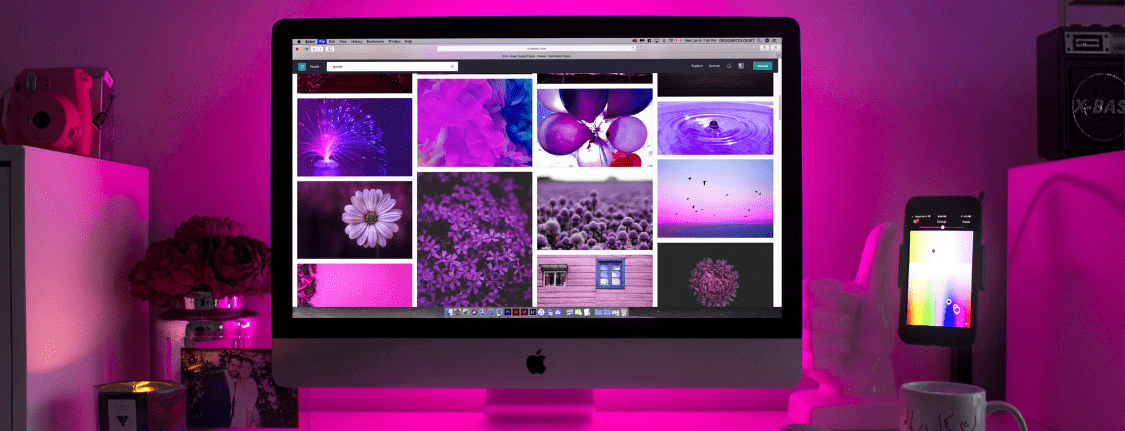- Home
- Design and Development
- What Is UX Design and Why...

In today’s digital landscape, where online consumer behavior is paramount, a staggering 88 percent of users abandon websites due to poor user experiences. This statistic underscores the critical role of User Experience (UX) design in web and digital product development. Beyond mere visual aesthetics, UX design places functionality at the forefront of decision-making, impacting every aspect of product creation. Effective UX design yields resource savings, heightened efficiency, increased brand value, and enhanced user satisfaction. Consequently, comprehending the significance of UX design not only ensures user contentment but also propels the achievement of business objectives.
User Experience (UX) design encompasses a diverse range of disciplines such as interaction design, information architecture, visual design, and usability. It surpasses a mere amalgamation of design principles, adopting an all-encompassing approach to guarantee a positive user experience.
Interaction design revolves around crafting intuitive interfaces that facilitate seamless interactions between users and products. This entails designing every element users engage with, from buttons and touchscreens to voice commands. The primary objective is to establish straightforward and rewarding interactions.
Information architecture entails the strategic organization and structuring of information in a clear, comprehensible manner. This approach empowers users to locate required information effortlessly, eliminating unnecessary obstacles.
Visual design assumes a pivotal role in shaping a product’s aesthetic appeal. It encompasses aspects such as color schemes, typography, images, layouts, and graphics. The visual dimension significantly influences user perceptions and overall experiences.
Usability emphasizes the ease of product use. It entails ensuring that products and services are user-friendly, easily navigable, and fully functional. Usability testing serves as a vital tool to assess user-friendliness and pinpoint areas for enhancement.
At its core, UX design centers around creating products that deliver valuable, distinctive user experiences. Every decision, feature, and interface is meticulously designed with the end-user in mind. It transcends appearance, focusing on how the product feels, its usability, and intuitive functionality. The ultimate goal is to surpass user expectations.
Now equipped with an understanding of UX design, let’s delve into the pivotal reasons why UX is integral to business prosperity. In this segment, we will elaborate on the advantages of UX design, ranging from risk mitigation and cost reduction to bolstering brand loyalty, enhancing productivity, and sustaining user engagement.
The inception phase of a project, illuminated by UX research, lays the foundation for product development. This phase illuminates the business’s objectives, user needs, and problem statements, significantly enhancing decision-making and design strategies. Investing in UX design upfront minimizes failure risks, as products and ideas undergo testing with stakeholders and actual users from the outset. Research by Forrester underscores this by revealing that each dollar invested in UX design yields a remarkable return of 100 dollars.
The iterative process of testing and validating designs to ensure optimal user experiences is a core tenet of UX design. This process results in time and cost savings, ultimately augmenting overall efficiency. By contrast, a non-UX-focused product development trajectory may lead to substantial financial losses and time wastage. Understanding customer expectations beforehand and prototype testing mitigate these risks, accelerating time-to-market and ensuring solutions align with user needs.
While aesthetically appealing designs can attract customers, a poor user experience can drive them away due to factors like confusing navigation or subpar layouts. Conversion rates, indicating the proportion of users making purchases on a website, are significantly influenced by UX design. Techniques employed by UX designers, based on extensive user analysis, identify and rectify usability issues, thereby augmenting conversion rates. Forrester’s research further validates this impact, revealing that robust UX can elevate conversion rates by 200-400 percent.
Robust user experiences foster trust and long-term relationships with consumers, contributing to brand loyalty and credibility. A seamless user journey fosters customer retention, underscoring the symbiotic relationship between user satisfaction and enhanced Return on Investment (ROI). Satisfied customers evolve into loyal advocates, fostering increased sales.
UX design strives to streamline task completion for users, promoting frictionless engagement. This principle is particularly evident in Software as a Service (SaaS) systems, where user-centric designs enable smoother workflows. Intuitive design minimizes steps required to accomplish tasks, thus empowering users to achieve more, in less time, compared to legacy software users.
Vital to extended user engagement, UX design endeavors to craft accessible and captivating designs that resonate with users. User-centric products that cater to needs ensure higher user retention rates. Genuine user excitement and value-driven experiences prompt users to remain loyal and even advocate the product or service to others.
In conclusion, the domain of user experience design profoundly influences business success in the digital age. This comprehensive approach, encapsulating interaction design, information architecture, visual design, and usability, harmoniously merges aesthetics and functionality. The six compelling reasons elucidated herein underscore why businesses must prioritize UX design. From boosting ROI and efficiency, amplifying brand loyalty, and augmenting productivity to fostering user retention and nurturing customer satisfaction, UX design stands as an essential pillar for business prosperity in the ever-evolving digital landscape.
© 2013 - 2025 Foreignerds. All Rights Reserved